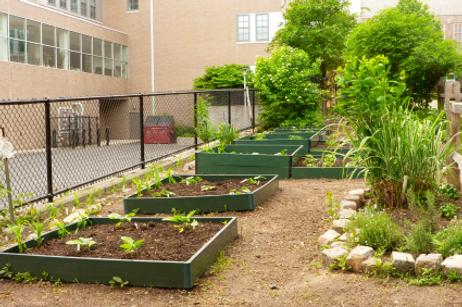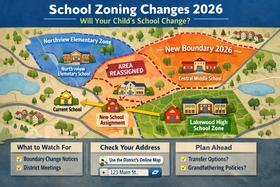The CDC estimates that the incidence of childhood obesity has tripled in the last three decades, which makes weight one of the primary factors in children's health today. While school lunches may not be a primary culprit in the rise in obesity numbers, few parents and educators would argue that this daily fare could stand to be improved. One solution has been to add more fresh produce to the school lunch counter – some of which is coming from gardens grown right on school grounds. However, this approach to healthier eating is not without its share of opponents.
The Prevalence of School Gardens
According to a recent report on Mother Earth News, schools around the world are tuning into the many healthy advantages of growing their own fresh produce. Students are assisting with the planting, cultivating and harvesting of crops that they eat right in their own school lunchrooms. Classrooms take turns weeding, fertilizing and coaxing crops along, until the great harvest comes along and school cafeterias get to work finding delicious, healthy ways to use the fruits, vegetables and herbs the students had been growing.
To help schools along the way, the Green School Initiative, the Healthy Schools Initiative, Farm to School and the Food and Agriculture Organization of the UN offer step-by-step planting guides and information about how to incorporate the growing process into the classroom. The National Sustainable Agriculture Coalition's Guide to Federal Funding for Local and Regional Food Systems will even help schools find the funding they need to get started on gardens of their own.
Potential Roadblocks to the Garden Process
Despite the many benefits a school garden could provide, many schools face significant roadblocks when beginning a garden on school property or nearby. Some of the obstacles might include:
- Budget limitations on the school lunch program
- Labor and time restrictions on school lunch staff and students
- Living up to national standards and requirements
- Current state of the cafeteria kitchen
Chicago Public Schools boasts more than 40 thriving school gardens, but none of the produce grown ever makes it into the schools. Instead, the produce is donated or sold, according to a report in the Chicago Tribune. The problem is that produce grown on school property is not always cultivated according to Chicago Public Schools guidelines. For example, corn is grown using pesticide, a clear violation of school policy. However, commercial vendors that sell to schools do not have to follow district guidelines to get their foods into school cafeterias, a disparity that has yet to be resolved in Chicago.
Thriving School Gardens
Despite the obstacles that keep many schools from growing their own fruits and vegetables, other schools have found significant benefits in maintaining their own gardens for the lunchroom. Be inspired by three school districts across the country that are currently enjoying the bounty of their harvests:
Abernathy Elementary School
Last year, this Oregon school bought a secondhand stove and mixer to begin making all their food from scratch, according to NPR. In addition to working in the garden, children learn the history and health benefits of the foods they grow. The students are much more likely to eat the food they grow, increasing their intake of fresh produce every day. The cafeteria staff has also discovered that serving homegrown food is actually much less expensive than reheating and serving prepared meals to students.
Monument Mountain Regional High School
This school in Great Barrington proves that garden lessons are not restricted to the primary grades. At Monument, students work together to cultivate and harvest crops, which they enjoy in their own school cafeteria. The garden, known as Project Sprout, began because parents at the school decided they could handle growing produce on their own, according to Boston.com. Since its inception, Project Sprout has grown from 3,500 to 11,000 square feet and includes 24 fruit trees and 75 raspberry plants.
Brooklyn, New York
It isn't often that city kids learn firsthand where their food comes from, but 10 Brooklyn schools aim to change that scenario by creating urban gardens of their own. According to the New York Daily News, Garden to School Cafe is an effort by New York schools to teach kids about agriculture at the same time they put healthier fare into the school cafeteria. Students work side by side with teachers in the garden, growing the food they will enjoy at lunchtime in their schools.
Adding more fresh produce to the table is one of the first lines of defense to protect children from the obesity epidemic today. When the fruits and vegetables are grown right at school, educational and health benefits meld together for a unique academic experience.
Questions? Contact us on Facebook @publicschoolreview.














